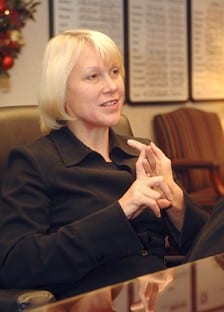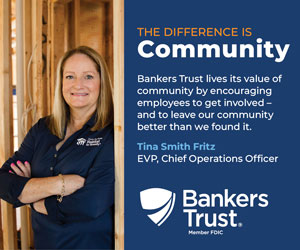All women on board

.floatimg-left-hort { float:left; } .floatimg-left-caption-hort { float:left; margin-bottom:10px; width:300px; margin-right:10px; clear:left;} .floatimg-left-vert { float:left; margin-top:10px; margin-right:15px; width:200px;} .floatimg-left-caption-vert { float:left; margin-right:10px; margin-bottom:10px; font-size: 12px; width:200px;} .floatimg-right-hort { float:right; margin-top:10px; margin-left:10px; margin-bottom:10px; width: 300px;} .floatimg-right-caption-hort { float:left; margin-right:10px; margin-bottom:10px; width: 300px; font-size: 12px; } .floatimg-right-vert { float:right; margin-top:10px; margin-left:10px; margin-bottom:10px; width: 200px;} .floatimg-right-caption-vert { float:left; margin-right:10px; margin-bottom:10px; width: 200px; font-size: 12px; } .floatimgright-sidebar { float:right; margin-top:10px; margin-left:10px; margin-bottom:10px; width: 200px; border-top-style: double; border-top-color: black; border-bottom-style: double; border-bottom-color: black;} .floatimgright-sidebar p { line-height: 115%; text-indent: 10px; } .floatimgright-sidebar h4 { font-variant:small-caps; } .pullquote { float:right; margin-top:10px; margin-left:10px; margin-bottom:10px; width: 150px; background: url(http://www.dmbusinessdaily.com/DAILY/editorial/extras/closequote.gif) no-repeat bottom right !important ; line-height: 150%; font-size: 125%; border-top: 1px solid; border-bottom: 1px solid;} .floatvidleft { float:left; margin-bottom:10px; width:325px; margin-right:10px; clear:left;} .floatvidright { float:right; margin-bottom:10px; width:325px; margin-right:10px; clear:left;}
Someday, business students at Iowa’s universities may look back with wonder at an era when women were still a rarity in corporate boardrooms. They may have trouble finding examples of all-male boards, and grumble at the challenge of researching a pioneering woman who was the first to serve on a corporation’s board.
Despite the numerous advancements women have made in business over the past decades, however, that day still seems far off.
Women “still face a number of glass ceilings, not only in politics but on corporate boards,” said Dianne Bystrom, director of the Carrie Chapman Catt Center for Women and Politics at Iowa State University. In many cases, the bias is unconscious, she said.
“I think what typically happens on boards is that when the company’s top management is men, they tend to pick people who look like themselves,” Bystrom said. “They look to their networks (for people to choose) to be on boards, and those are men that they hang around with.”
America’s largest companies, the Fortune 500, have made relatively little progress in appointing more women to their boards. Women held just 15.2 percent of director positions on Fortune 500 boards, according to a survey completed in December 2008 by Catalyst Inc., a global nonprofit organization focused on increasing opportunities for women in business. That was just a slight increase from the 14.7 percent of board positions women held the previous year. Additionally, little change occurred in the board composition of companies that had three or fewer directors, and the number of companies with no women on the board actually increased. Women of color held 3.2 percent of all board director positions.
By comparison, women directors collectively represent 22 percent of the board membership of 18 of the state’s largest private employers, each member companies of the Iowa Business Council. Some Greater Des Moines-based companies can boast even higher percentages. (see table)
Women have had many opportunities to serve on the boards of nonprofit organizations and agencies, but “the area that seems to present challenges is corporate boards, and that’s not unique to Central Iowa,” said Jacquie Easley, director of community and diversity services for Mercy Medical Center – Des Moines. has served on the boards of the Des Moines Independent Community School District, the Des Moines Metropolitan Transit Authority (now Des Moines Area Regional Transit Authority), Drake University, the YWCA of Greater Des Moines, United Way of Central Iowa and Willkie House, among others. She currently serves on the board of Greater Des Moines Habitat for Humanity, the Des Moines Plan and Zoning Commission, Terrace Hill Commission and on the American Heart Association’s national diversity committee, and more.
Service on nonprofit boards can serve as a springboard for an invitation to a for-profit board, said Easley, who was appointed to the board of Mercantile Bank, now U.S. Bank, in 1996.
“I was told I was a candidate for (the bank) board because I had served on two previous boards, the Drake University board and the Des Moines School Board,” she said. “Because of the visibility of that, that led to my position on the U.S. Bank board, which I still hold.”
Easley said she believes many corporations, particularly those whose customers are primarily women, could be doing a better job of diversifying their boards with women as well as minorities.
United Way and the Greater Des Moines Partnership are among organizations that provide a strong search pool for women to expand their board experience, said Easley, who chairs the Partnership’s diversity committee. “We often offer our members (for board service), so we have a pool to provide names, and they have asked us. I believe there are resources that anyone looking to diversify their boards can (find if they) come to us.”
Wendy Carlson, who in January became president and CEO of American Equity Investment Life Holding Co., has served on her company’s board for just the past year, and was among the first three women to be appointed to the board when it was expanded in September 2008.
“The fact that there weren’t any women on the board before wasn’t a reflection on the company,” Carlson said. “It’s more of a generational issue; as we see more women rising to leadership positions, I believe we’ll see more women on boards.”
Carlson, who also serves on the board of West Bancorporation Inc., said the business community has been fortunate to have a number of women who are qualified and have been able to step up to serve on boards.
“I think I’ve received tremendous support,” she said. “Long before I went on this board or the West Bank board, I served on nonprofit boards, and I think that was a great training ground. In all of those board experiences, I found the networking with all of the members, including the men, has just been invaluable to me.”
Regardless of gender, fewer people are willing to serve on boards, particularly as independent directors are being held to higher standards by regulatory agencies, Carlson said. “I think many people would shy away from boards because of the heightened scrutiny and accountability,” she said.
One of Central Iowa’s largest employers, Hy-Vee Inc., currently has two women on its 15-member board of directors: Rose Kleyweg Mitchell, a member of the company’s executive committee, and Melissa Draheim, a store director in Fairmont, Minn. As a private company, Hy-Vee doesn’t have any outside directors on its board, so its board is made up of either officers or store directors, said Ruth Comer, assistant vice president for media relations.
“The makeup of our board of directors is a reflection of the makeup of the officer and management ranks,” Comer said. “Those numbers (of women) have been increasing annually, and will continue to increase because we know that our success in the future is going to depend on getting the best people involved. Because a large percentage of our customers are female, we feel that’s important to have that reflected in our employment, up to our board of directors.”
Comer said Kleyweg Mitchell has “really been a pioneer for women at Hy-Vee” in helping to bring more women into the management ranks.
“That has really been part of her duties, developing more employee talent, not only from the standpoint of attracting more women into careers with Hy-Vee, but also looking at ways that careers are structured at Hy-Vee and what we can do to make the jobs themselves more attractive to women,” Comer said.
Having the right qualifications to serve on a board is essential, said Joyce Chapman, who retired from West Bank last year. She was appointed with Carlson in September 2008 to the American Equity board and in May was named to West Bancorporation’s board.
“One of the most important things is to be able to understand the financials,” Chapman said. “I need to give kudos to the Community Foundation of Greater Des Moines for the training they provide people who want to serve on nonprofit boards. They’ve really stepped up with that.”
Nonprofit board experience is very helpful in gaining the experience needed to serve on a for-profit board, Chapman said.
“I think it’s just team building; you learn a lot by doing as to what works and doesn’t work,” she said. “Experience is the best teacher.”
Chapman also serves on the board of Mercy Medical Center – Des Moines. Since retiring from West Bank last year, Chapman has joined the Hoyt Sherman Place Foundation’s board of directors and the fund-raising board for the Des Moines Pastoral Counseling Center.
Mentoring is an important step in nurturing the right people to step up into leadership on boards as well, she said. “I think that’s a natural byproduct of wanting to have the best and the brightest to carry on the work. There are a lot of wonderful younger professionals coming up in business.”








